Burkina Faso
His strong, confident voice becomes thin as he recounts what happened on National Road 22 in Gaskindé, in war-torn northern Burkina Faso, on September 26, when a convoy of dozens of trucks loaded with food was attacked.
Aziz, whose name has been changed for his safety, was driving his truck loaded with rice and sorghum at the back of a convoy of 207 vehicles secured by soldiers when shots rang out.
The attack, claimed by al-Qaeda, officially killed 37 people, including 27 soldiers. 70 truck drivers remain missing, according to their union.
Gaskindé is the umpteenth attack in a region of the Sahel that has been battered by jihadist violence in the past ten years, and it is a new symbol of the powerlessness of states to control their remote countryside and secure their populations.
Five days later, a military putsch, the fifth in two years in the region, swept away the power in place in Ouagadougou.
The testimonies collected by AFP tell of the negligence of the army and the daily life of civilians caught in the crossfire of the war.
The trucks had left Ouagadougou for Djibo, one of the main cities in northern Burkina, which has been under a jihadist blockade for the past 18 months.
To impose their presence and their law, jihadists have repeatedly used the blockade strategy to subdue rural populations. In neighbouring Mali, many villages have had to bend over backwards.
- "Débandade" -
In Djibo, where about 300,000 people live, most of them displaced, the pressure has been mounting for two years. The population has more than tripled with the arrival of displaced persons.
The Burkinabe military, sometimes assisted by French special forces, have occasionally tried to break the blockade.
To avoid starvation in the city, where almost no food is coming in or going out, the army has undertaken to secure long-supply convoys. The one at the end of September was joined by dozens of traders and other civilians, says Aziz.
A first mine was discovered and avoided on the road, says a senior soldier in the convoy. A few harassing shots punctuated the beginning of the journey.
But everything changed in a few seconds at Gaskindé, at 3:00 pm (local and GMT).
"I have never seen an attack of this scale," says the soldier. He describes the heavy machine guns mounted on pickup trucks and the dozens of motorcycles.
"It lasted several hours, we tried to get the civilians out but we were overwhelmed, without air support," he says. "They had far superior firepower."
"It was a mad dash, a stampede," said Rabo Brahima, president of the Union of Truck Drivers of Burkina (UCRB).
A drone strike "prevented more people from dying," says the soldier, but nothing has officially been released.
At the end of the convoy, Aziz, frightened, turned around and went back to the first town. Another driver, at the head of the convoy, was not so lucky.
He told AFP that he spent more than four hours in the bush, saw men fall under bullets, and walked 27km to a locality where he arrived around 6 pm.
His truck was burned by the assailants as were more than a hundred others.
Videos taken by drivers and other civilians who survived show a long column of fire on National 22. Only 70 of the 207 trucks could be saved, according to Mr. Rabo.
- "Slaughterhouse" -
The affair quickly made a big splash in Ouagadougou. An initial report put the number of dead at 11 and the number of missing at 50. It evolves rapidly.
The press wonders and the debate rumbles: was it a military failure? Why did a support helicopter turn back at the beginning of the attack?
Security consultant Mahamoudou Savadogo and a military source said that some soldiers had expressed their disagreement with the departure of the convoy.
The attack, he said, was "the straw that broke the camel's back" in Burkina, where the ousted Lieutenant-Colonel Paul-Henri Sandaogo Damiba had promised in his January coup to regain the upper hand over the jihadis.
Sending "such a convoy" on the "axis of death" that is the road to Djibo was like "sending men to the slaughterhouse," according to the consultant.
Captain Ibrahim Traoré justified his putsch in part by the "continuous deterioration of security.
Djibo has since been resupplied by the army by helicopter: 70 tons of food have been flown in to alleviate the emergency.
The last convoy arrived in Djibo in early September. On the way back, a busload of civilians was blown up by an improvised mine, killing 35 civilians.
On Friday, a posthumous decoration and burial ceremony for the soldiers who fell at Gaskindé was announced in Ouagadougou. "And we civilians, will we get any help or recognition from the state?" asked one driver.




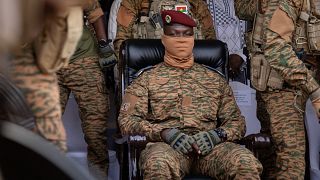


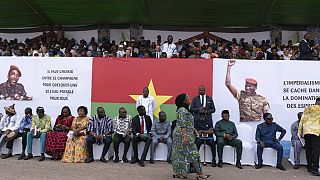
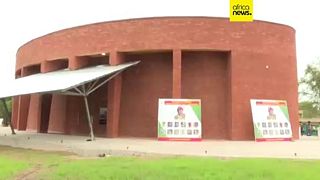

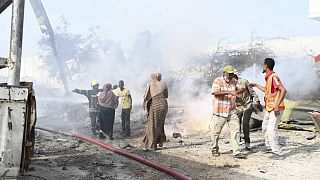
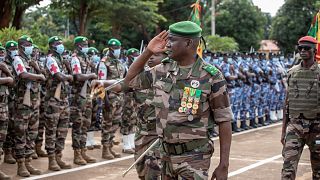

01:04
Mali's armed forces say they killed 80 militants after series of attacks on military posts
01:49
Russia says it plans to boost economic and military cooperation with Africa
Go to video
Tensions mount in Burkina Faso a week after the coup attempt
Go to video
Burkina Faso military government says it thwarted "major" coup attempt
Go to video
US Africa command warns against withdrawing troops from the continent
01:17
Burkina faso's junta grants amnesty to 21 soldiers convicted in failed 2015 coup